The earth’s deterioration is a harsh reality that everyone must accept. As man continues to consume natural resources, the use of fossil fuels and the production of goods will continue and affect the environment’s stability.
With pollution and climate change threatening the well-being of the globe’s ecosystems and its inhabitants, reducing your carbon footprint should be one of your biggest responsibilities.
Aside from avoiding plastic, opting for public transportation, and going for more organic food choices, one significant factor in defining a person’s carbon footprint is energy consumption. Fossil fuels remain to be the most common energy source; but thanks to innovations in technology, people are now able to harness the power of the environment without doing any harm.
Switching to renewable sources can be one of your best investments. Wind turbines, hydroelectric dams, and solar panels are all eco-friendly alternatives to fossil fuels. Opting for them won’t only minimize your impact on the environment, but it would also allow you to enjoy several practical benefits as well.
How much power is consumed by industries?
To have a better grasp of how much energy you can conserve from renewable sources, it’s important to know how much power the world actually consumes.
More than half (54%) of the world’s total energy is used for the production of goods and the industrial sector, which can be further categorized into three subgroups: energy-intensive manufacturing, nonenergy-intensive manufacturing, and nonmanufacturing. Here are some examples of industries in each category:
Energy-intensive manufacturing:
- Food – food, beverages, and tobacco products
- Paper – paper manufacturing, printing, and related products
- Basic Chemicals – inorganic chemicals, organic chemicals, agricultural chemicals, and resins
- Refining – petroleum and coal refineries
- Iron and Steel – iron and steel manufacturing
- Nonferrous Metals – manufacture of metals such as copper, zinc, and tin
- Nonmetallic Minerals – production of nonmetallic minerals such as cement, glass, and clay
Nonenergy-intensive manufacturing:
- Chemicals – pharmaceuticals, paint, detergents, and other chemicals products
- Processed Industrials – machinery, computers, transportation equipment, and electronics
Nonmanufacturing:
- Agricultural – agriculture, forestry, and fishing
- Mining – coal mining, oil extraction, and mineral collection
- Construction – civil engineering construction, industrial construction, and creation of residential and commercial buildings
Source: U.S. Energy Information Administration
Energy consumption ultimately depends on a region’s economic activity and technological capability. Due to their role in the world’s economy, countries such as China have higher energy demands—which increased from 14.8 quadrillion Btu (British Thermal Units) in 1990 to 59.0 quadrillion Btu in 2020—as compared to other nations.
Overall, the world’s industrial sector is expected to grow by an average of 1.2% yearly. From 73 quadrillion Btu in 2012, it is likely that the world’s energy requirement will reach 85 quadrillion Btu by 2040.
How much power does the population consume?
Now that you have a general idea of how much energy is used across businesses, you may be wondering how much a person actually consumes each year. Due to increasing urbanization, 80% of the world’s total population is enjoying the benefits of electricity.
Even though more and more people are gaining access to power, consumption rates may vary due to factors such as house and family size, appliance preferences, local electricity prices, and other personal needs.
In developed regions like the U.S., the Energy Information Administration found that the average American home consumes around 11 000 kilowatt-hours (kWh) of electricity annually. Meanwhile, the average household in developing countries such as the Philippines is estimated to stand about 248 kWh per year.
Back in 2014, a person’s average consumption of electricity worldwide stood at 3,132.148 kWh and has increased since then. To put it into perspective, global consumption increased from 10,991 terawatt hours (tWh) in 1994 to 22,964 tWh in 2018. With this in mind, you should collect your electricity bills and take a look at how you stack up against the world’s average. If your consumption is a lot higher, you may want to reassess your situation and find ways to trim it down.
Why should you go solar?
Tweaking your daily habits can reduce your electricity bill, but if you want to see significant results, switching to renewable energy is your best bet.
Out of all energy sources, solar has established itself as the most popular and beneficial. Unlike power plants that can produce greenhouse gases and pollute bodies of water, solar panels and farms have little to no negative impact on the environment. In fact, solar panels can reduce 70 million metric tons of carbon dioxide each year, which is similar to planting 1.2 billion trees.
Solar panels are now more affordable. Since 2009, installation costs have fallen by 70%, and most units have an average lifespan of 15–20 years, which means it can help you save money on electricity.
Most solar panel suppliers reward their users through solar panel grants. You can earn money by selling your unused energy back to your provider’s grid. Moreover, in case you decide to sell your home in the future, having solar panels installed can increase its value by 4.1%.
With solar panels continuously gaining traction, the solar energy market is projected to reach $223.3 billion by 2026. As long as the sun shines on Earth, solar energy can always be harnessed, and the industry will remain relevant in the years to come. If you’re planning to build or make changes to your house or office, you should definitely make the switch to solar.
Not convinced yet? Here are some interesting figures about solar energy that you should take a look at:
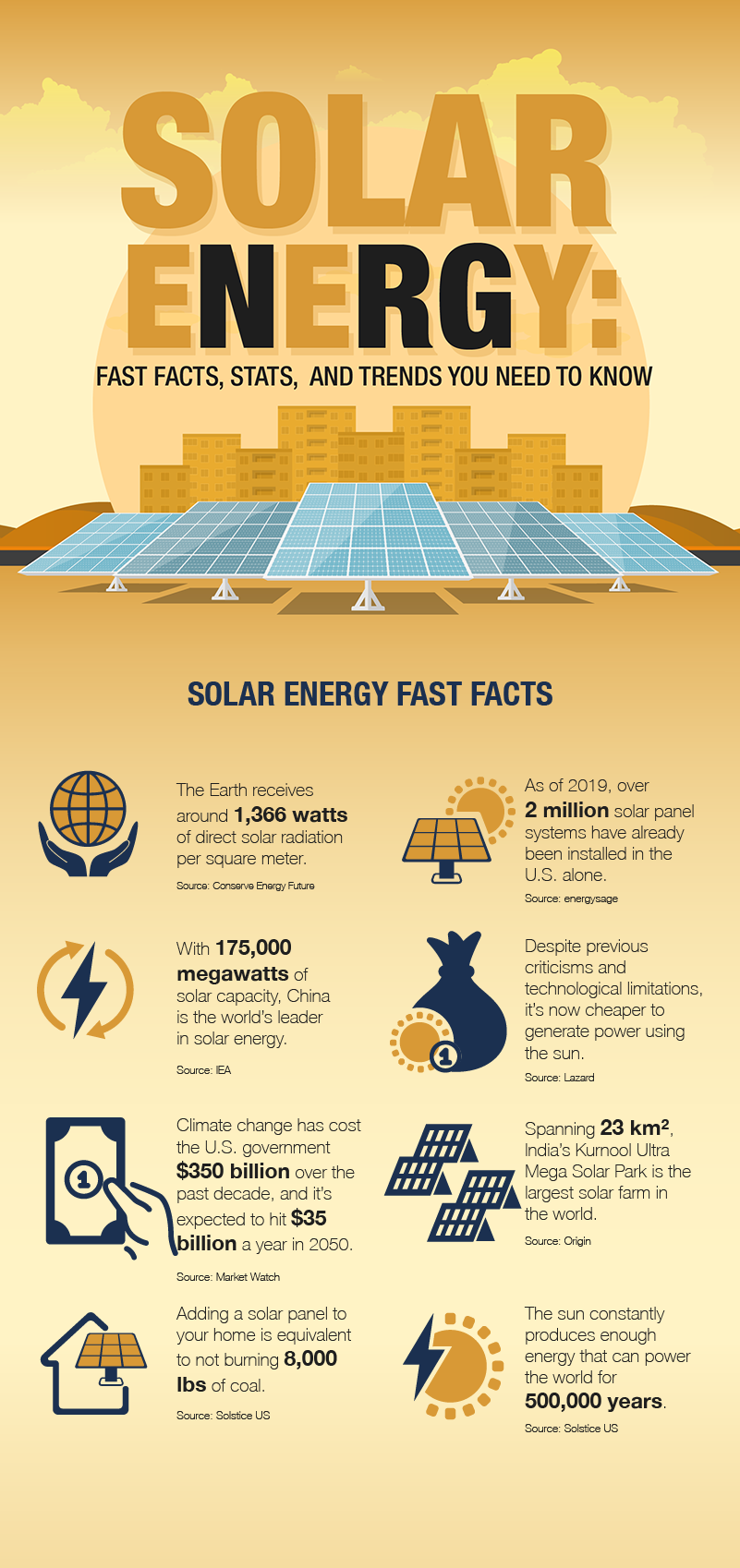

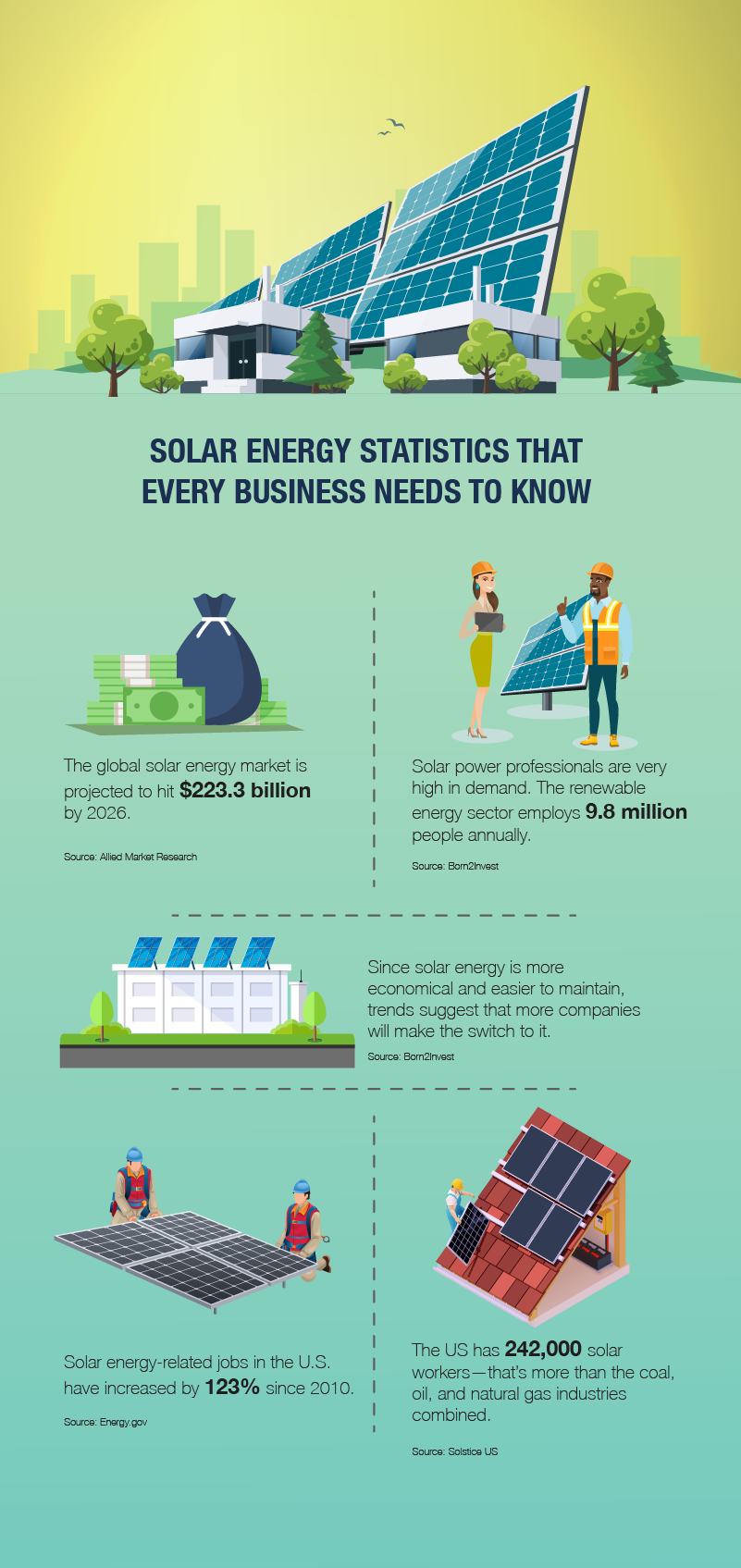
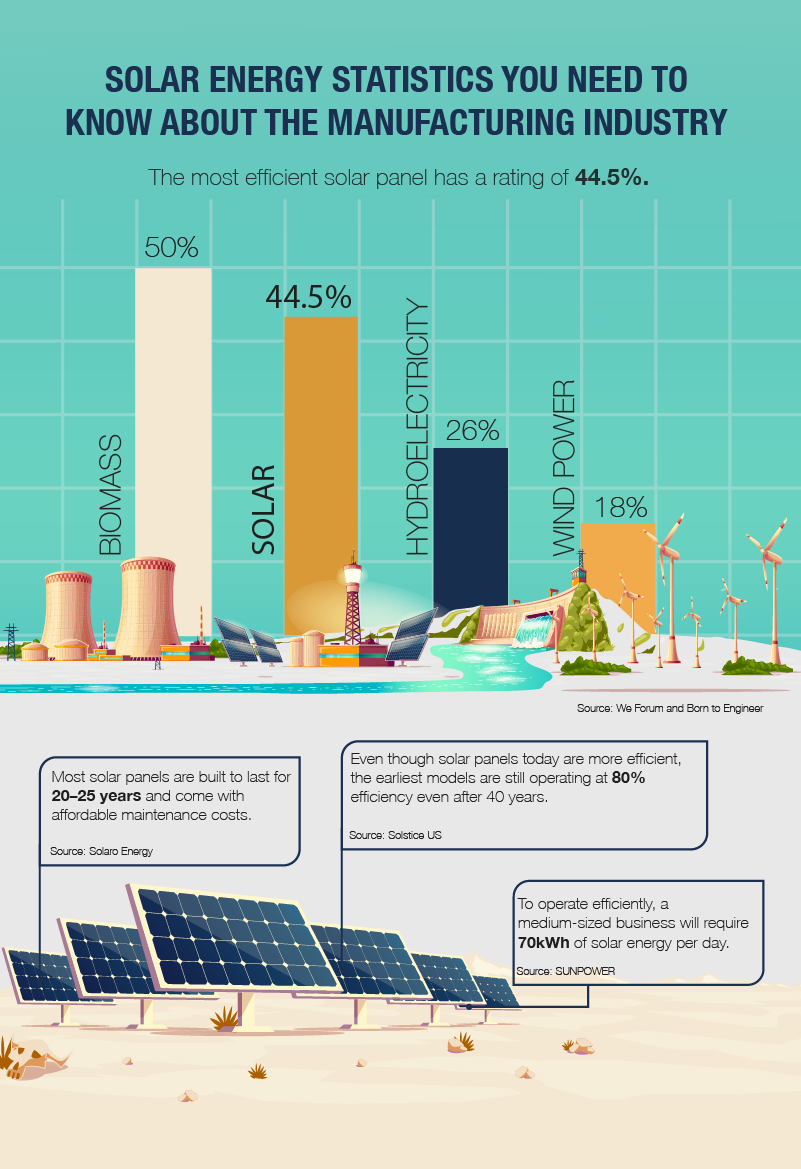
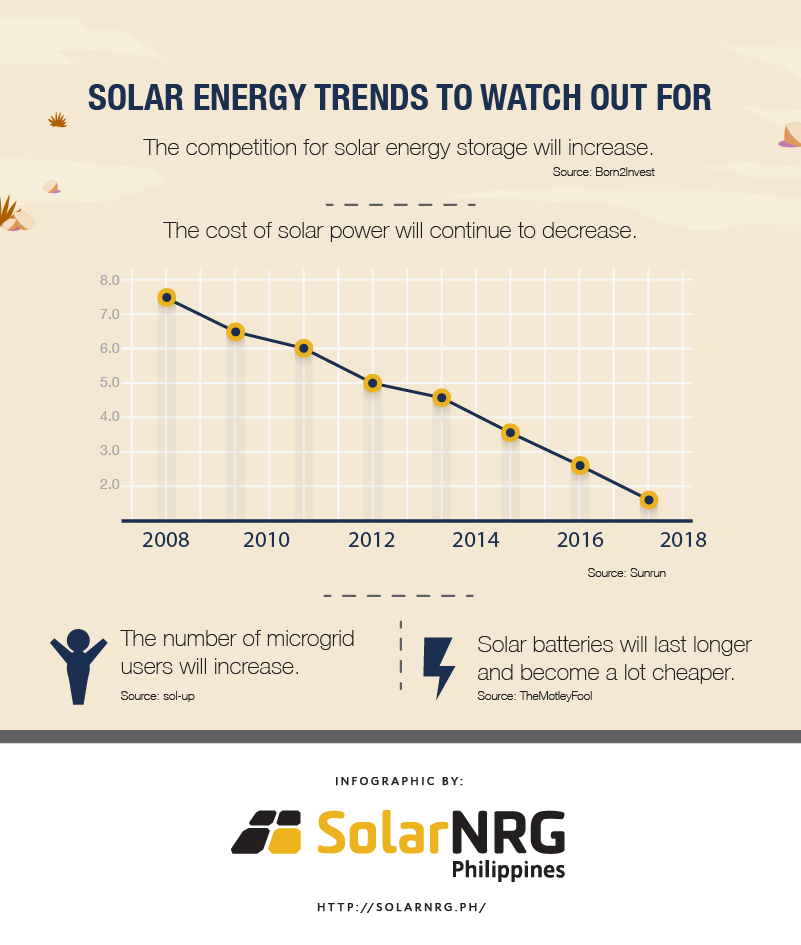
The world’s energy demands will only continue to grow. With climate change already happening and fossil fuels running out, industries and households will eventually have to look for more sustainable sources of power. Fortunately, innovations in technology have helped reduce the carbon footprint of millions by giving them the option to switch to renewable sources such as the sun.
Over the years, solar energy has slowly established itself as one of the cleanest and most beneficial sources of electricity. However, a lot of people are still reluctant to purchase solar panels due to past stigmas and misconceptions. There may be criticisms about their affordability and performance, but solar panel units of today are now a lot more cost-efficient.
If you’re planning to make the switch, better do it as soon as possible, especially if you live in the Philippines or a region with long hours of sunlight. Each solar panel you install will do more than just reduce your impact on the environment. If you start using them now, you can enjoy immediate energy cost savings today.
Go for sustainable solutions
As a responsible citizen, one of your duties is to become a steward of the environment. In this age, opting for eco-friendly choices can make all the difference in the fight against climate change. Reduce your carbon footprint while taking big steps toward financial wellness. Take a look at our solar energy solutions to learn more.
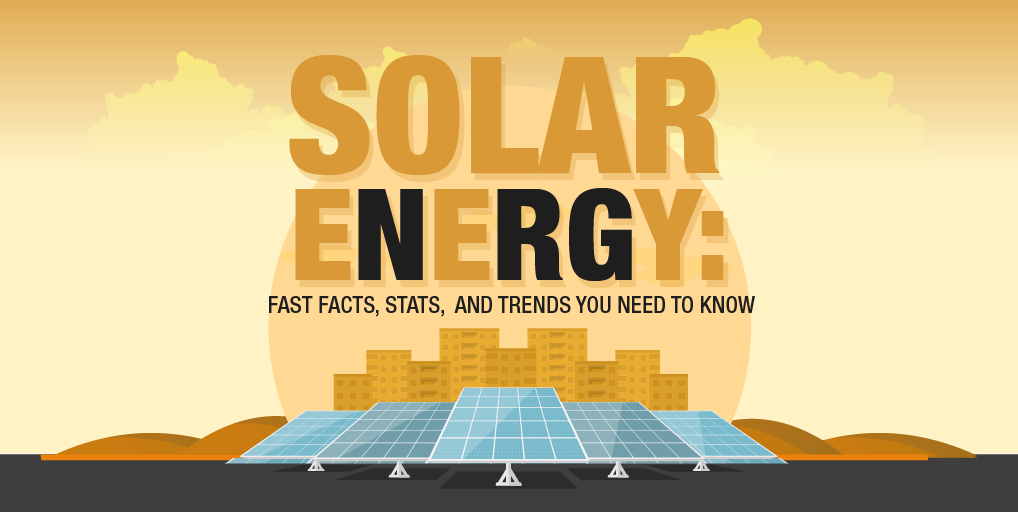
Recent Comments